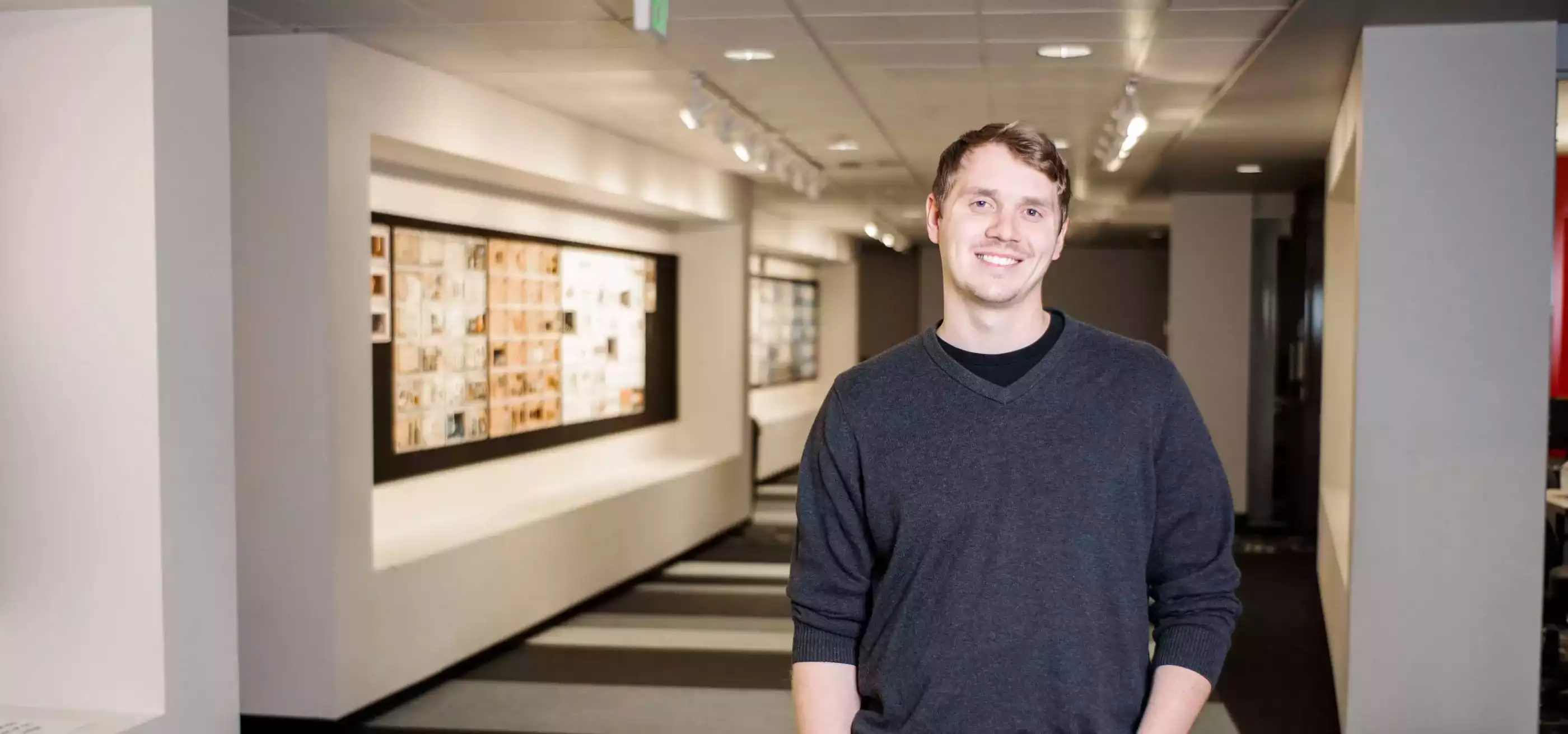Brett Cunningham had never worked in VR when he began his internship at MXTreality, a virtual reality solutions company based in West Seattle. Despite that, the senior Bachelor of Science in Computer Science in Real-Time Interactive Simulation student quickly found himself assigned to a pair of high-profile projects, including one for a major international client.
After spending a month working on a VR bungee jumping experience for the Space Needle, Cunningham was put to work helping build a networked VR training simulation for a branch of a foreign government responsible for maintaining, operating, and improving the country’s roads.
“My big takeaway was that VR and networking can be pretty simple — it doesn’t have to be this big daunting thing you’ll never figure out,” Cunningham says. “My other takeaway was how similar the experience was to being on a DigiPen game team.”
Beyond the similar team dynamics at MXTreality, the feeling of familiarity was bolstered by the fact that the company employs 12 DigiPen graduates. “It was a very tight community,” Cunningham says. “I didn’t really feel like an intern, because I jumped in and almost immediately joined the ranks as one of them as far as responsibilities that were given to me.”
The project Cunningham would spend the bulk of his internship working on came from a unique proposition the foreign government client brought to MXTreality. In order to help train its employees — everyone from traffic officers, maintenance crews, emergency response agents, and dispatchers — MXTreality was asked to create a real-time virtual classroom and simulation environment.
Once the project is completed, employees from multiple locations around the country will be able to put on VR headsets and enter into a room as avatars. Here, the simulation instructor can write on a virtual white board, show the class videos to accompany their lessons, or use a pen to draw in 3D space. Students can take notes, or as students are wont to do, throw paper airplanes around. Those little extra touches have been a hit throughout the testing phase. “With the 3D pen, you can draw a basketball hoop and throw a basketball you drew into it,” Cunningham says. “Just simple things where people can use their creativity, those are the things people loved and spent a lot of time using.”
From the classroom, the instructor can then lead the class in hands-on educational simulations. Users are presented with simulated scenarios from the field and must put what they’ve learned to the test — all in a safe and controlled virtual environment. “Here’s a car crash, and here you have a helicopter coming in,” Cunningham says. “How would you redirect traffic? What kind of signs would you use? How would you communicate to other services about the accident? What tools would you use to fix this bridge? The main purpose was training, practice, and eventually certification for people who work in these branches.”
While Cunningham had his hands in a few different areas on the project, his main role was finding out how to create a networked VR experience in the first place — something MXTreality hadn’t previously attempted.
“How much would it cost? How much to host servers? Is it easy to adapt with VR?” Cunningham says. “Once I determined that it’s something we could do, we got the assets we needed and started experimenting. It was mostly my responsibility to research and find good design patterns, figuring out how to design for VR networking in smart and efficient ways that wouldn’t take up unnecessary bandwidth.”
Beyond the lessons Cunningham learned about networking and VR at MXTreality, one of the other big perks was getting to try out the simulations on his own — some of which were more playful than others.
“We did this thing where you’re on a road, and there are cars passing by. You have this whole smorgasbord of different objects — cars, traffic cones, signs — you can pick up, throw around, and then they pop into bigger versions of themselves. They also had these models of people you could throw cones at and just knock them over,” Cunningham laughs. “To jump in there and interact with objects like that was a lot of fun.”
